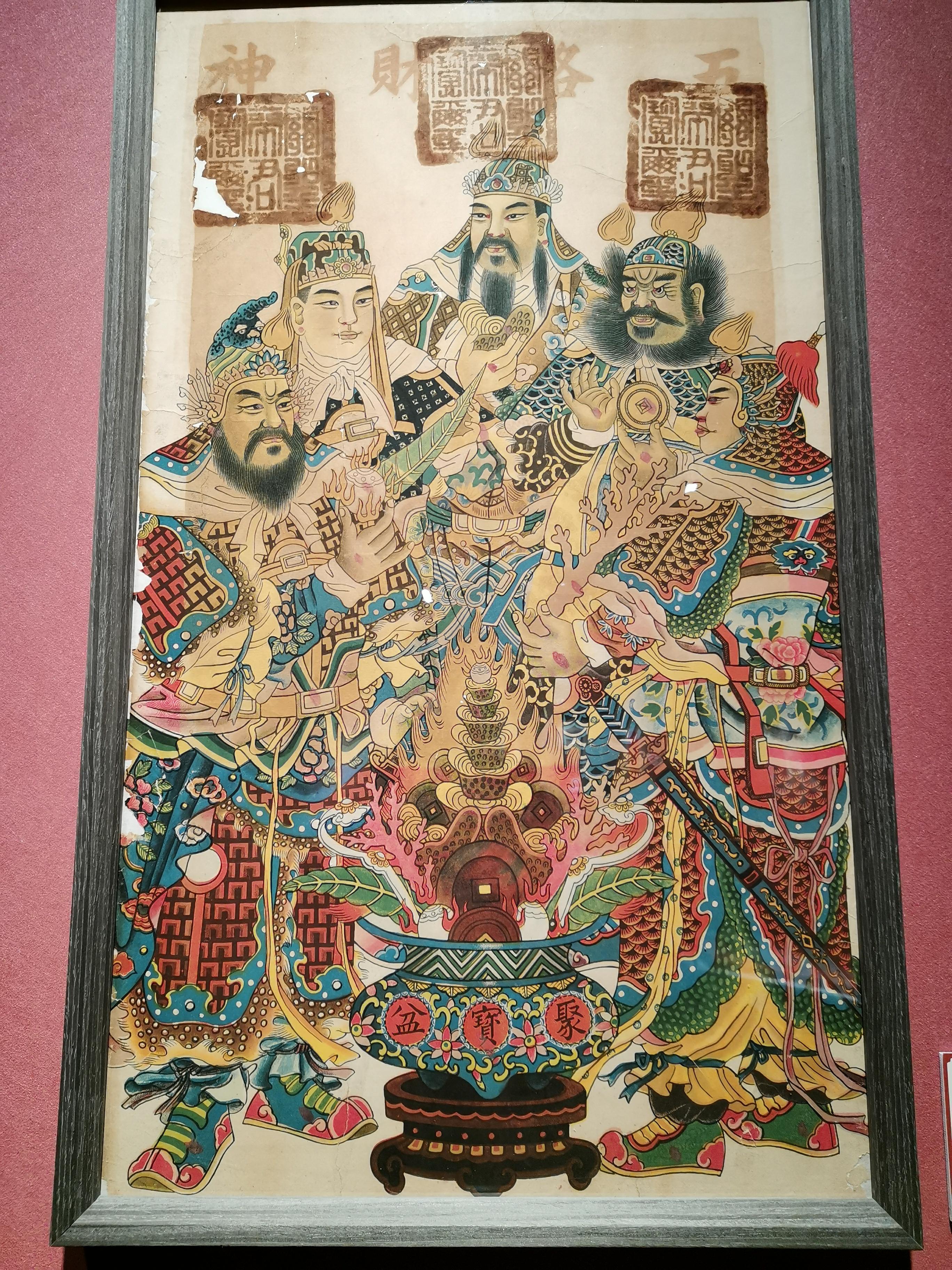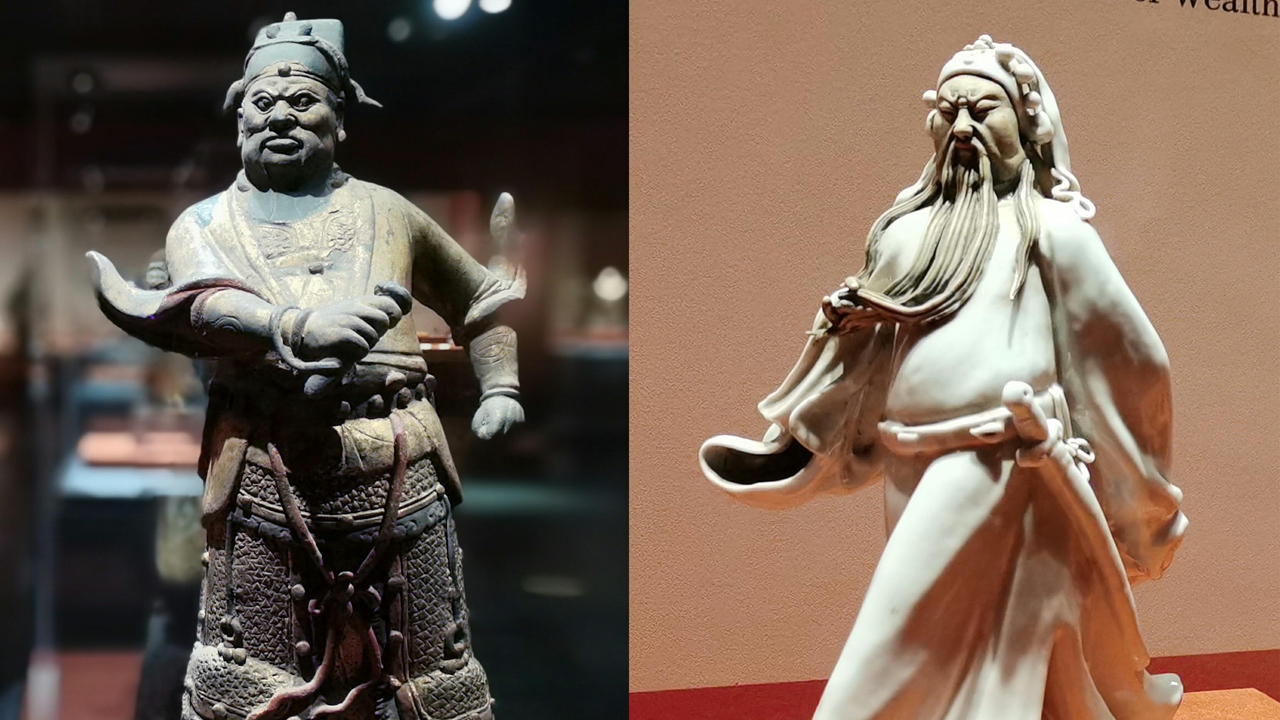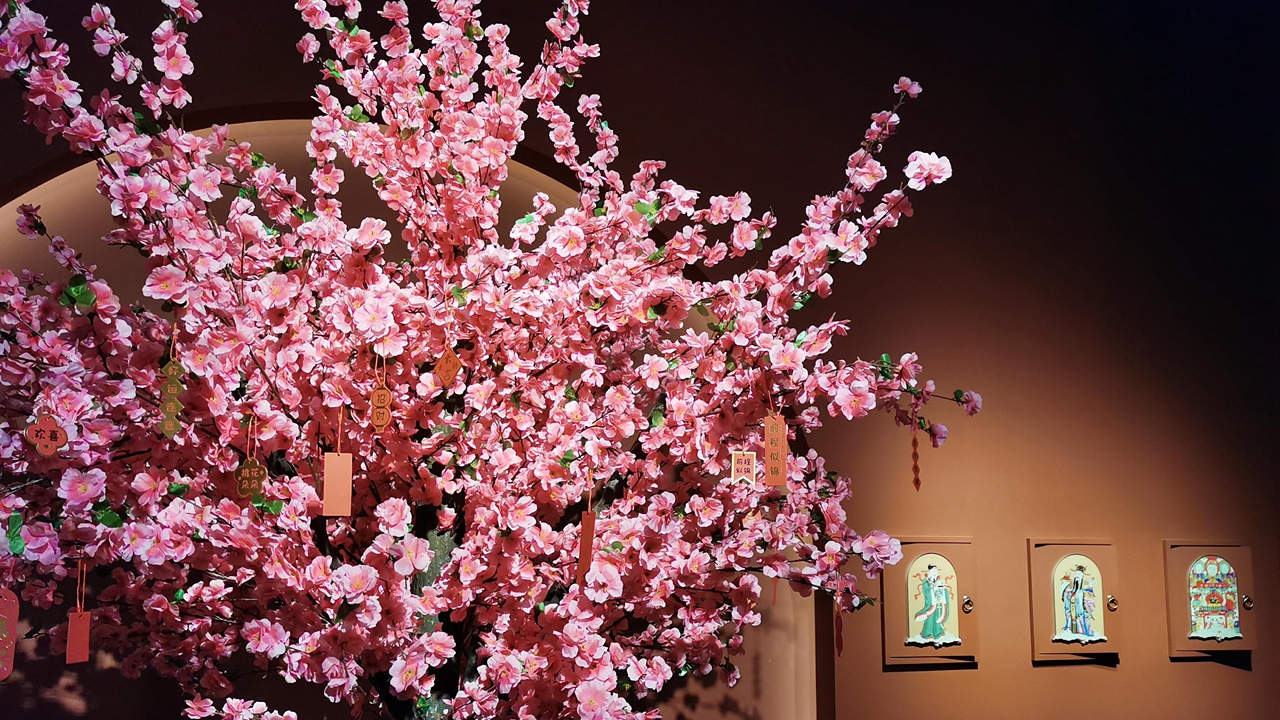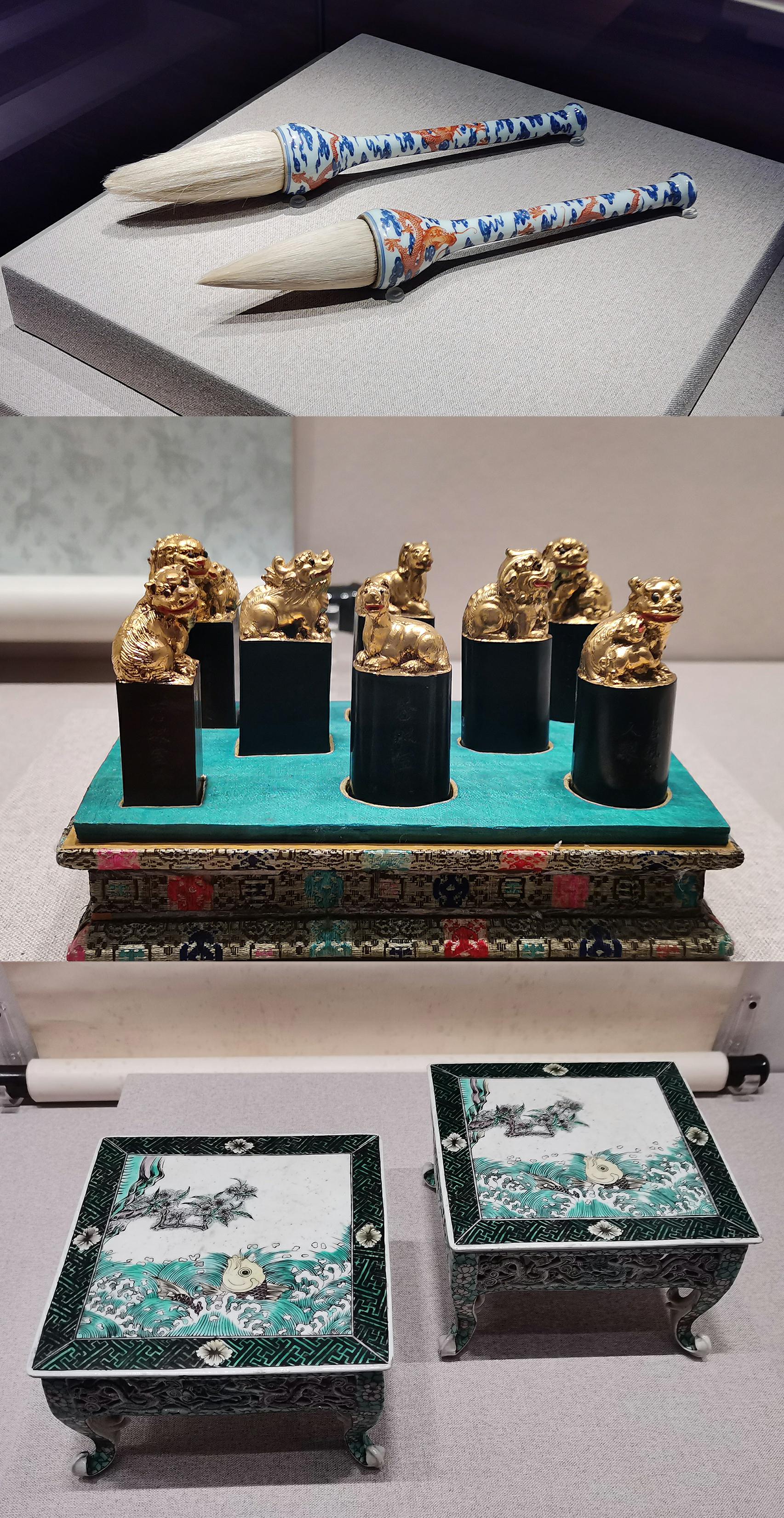Meet God of Wealth, admire elegant study room items
The God of Wealth plays a starring role during the Chinese New Year holiday since many wish the god to bestow great fortune. As the Spring Festival is approaching, an exhibition featuring the traditional Chinese folk customs of praying for wealth is being held at the Nanshan Museum, reflecting Chinese people’s pursuit of abundant food and affluent life in the past thousands of years.

A Chinese New Year painting created during the first half of the 20th century depicts the Gods of Wealth from five directions. Photos by Cao Zhen
The exhibition, running through Feb. 5, 2023, showcases 112 pieces of cultural relics provided by 10 domestic organizations, including items such as Han Dynasty (202 B.C.-A.D. 220) gold ingots, Tang Dynasty (618-907) gold coins, a Han Dynasty bronze money tree, Qing Dynasty (1644-1911) cloisonné enamel treasure pots, God of Wealth statues, Chinese New Year paintings and porcelains. Legends, folk tales and traditional customs behind these items not only express people’s wish for a better life but also inspire people to mind their behaviors.

(L) A bronze statue of Zhao Gongming, a representation of the God of Wealth. It was crafted during the Ming Dynasty (1368-1644). (R) A porcelain figurine of Guan Yu, a representation of the God of Wealth. It was crafted during the first half of the 20th century.
The God of Wealth has appeared in many representations across the ages and the most memorable ones include Zhao Gongming, a legendary figure in Taoism, and Guan Yu, Bi Gan and Fan Li, who were historical figures and worshiped because of their virtues.
Guan, a famous general in the late Han Dynasty, was one of the best-known historical figures in Chinese history. His loyalty has been highly praised for generations, so he has been worshiped in business circles since the Qing Dynasty because businesspersons believe loyalty or faith is a necessary code of conduct for doing business.
Buddhism also played a role in forming the wealth-praying belief in China. For example, the Money-bringing Child deity was inspired from the Good-Fortune Child in Buddhism, and the Immortals of Harmony and Union were originally two Tang Dynasty monks, Hanshan and Shide.

Flowers decorate "The Culture of God of Wealth" exhibition at Nanshan Museum.
There are also dazzling porcelains and Chinese New Year paintings on display. The exhibition is decorated in a red color tone, adding a festive mood for the Chinese New Year which falls on Jan. 22, 2023. Red signifies good fortune, vitality, celebration and prosperity in Chinese culture and the exhibition leaflet is wrapped in a red envelope, so pick one up to boost your luck.

(Top) Two brushes with goat hair bristles and porcelain handles made in the Qing Dynasty. (Center) Ink sticks made in the Qing Dynasty. (Bottom) Porcelain inkstone tables made in the Qing Dynasty.
Meanwhile, another exhibition running through Feb. 19, 2023 at the museum showcases elegant Chinese stationeries from the Ming (1368-1644) and Qing dynasties when the craft of making brushes and ink reached its peak. Brushes and ink play a unique role in bringing out the artistic essence of traditional Chinese paintings and calligraphy.
Fine inkstones are also indispensable objects for Chinese study rooms, as well as for antique collectors due to their artistry. Study room accessories, such as brush holders, wrist rests and ink dishes also provide an ornamental function, while reflect the artisans’ masterful craftsmanship and refined lifestyle of literati.

A Qing Dynasty porcelain vase with the famille rose pattern of the three deities.
Booking: WeChat account “nanshanmuseum”
Venue: Nanshan Museum, Nanshan District (南山博物馆)
Metro: Line 1 or 12 to Taoyuan Station (桃园站), Exit B